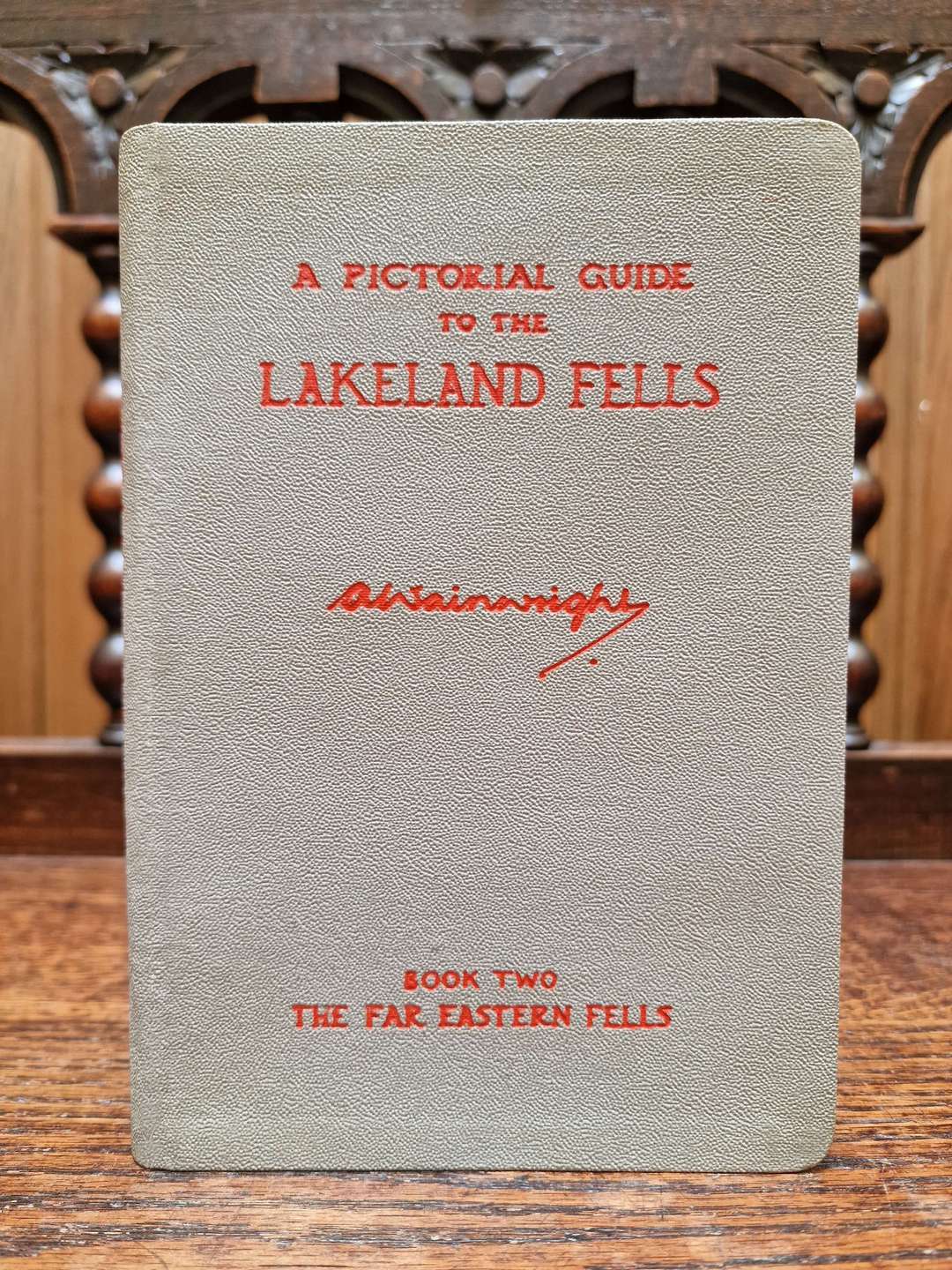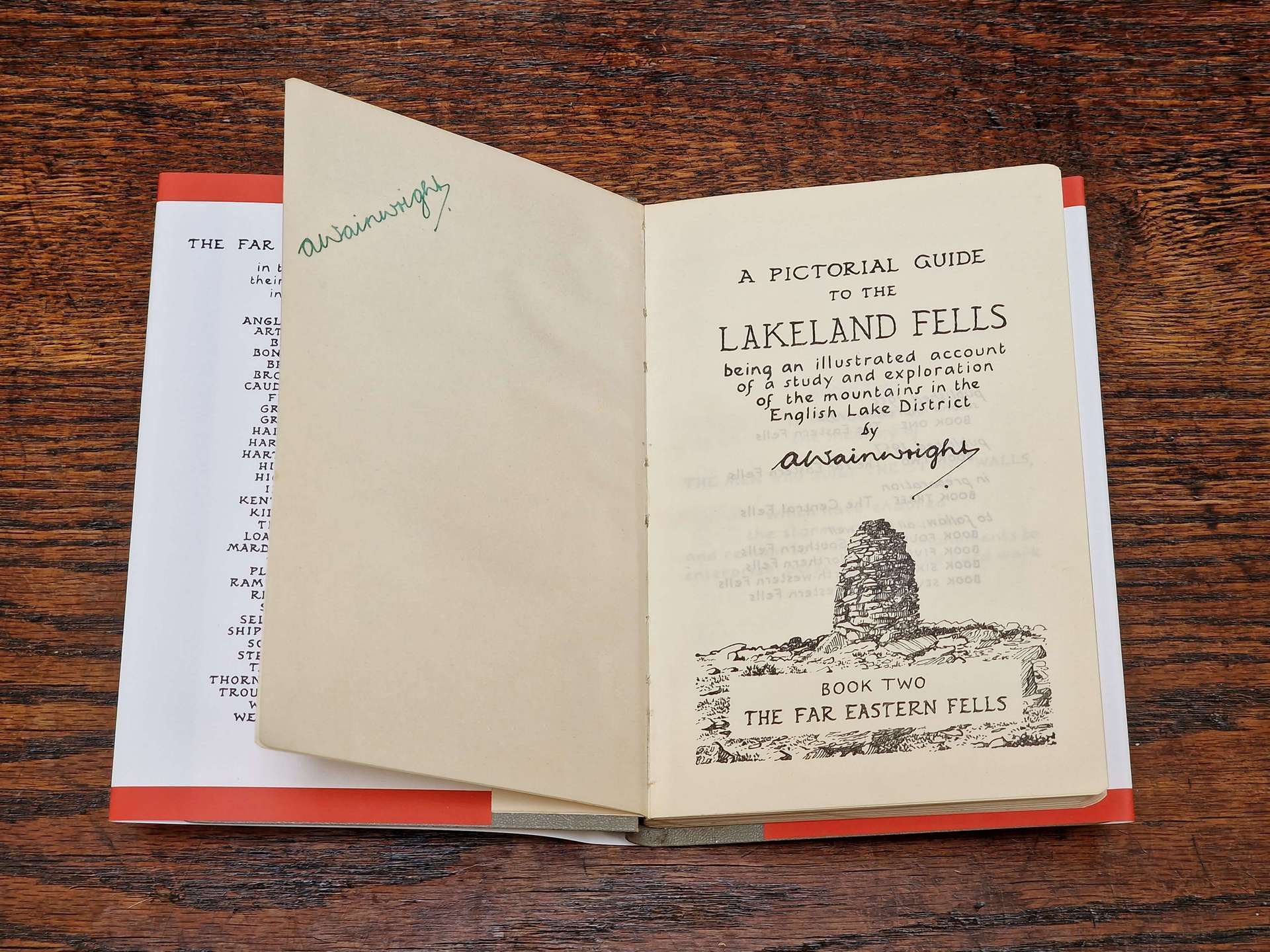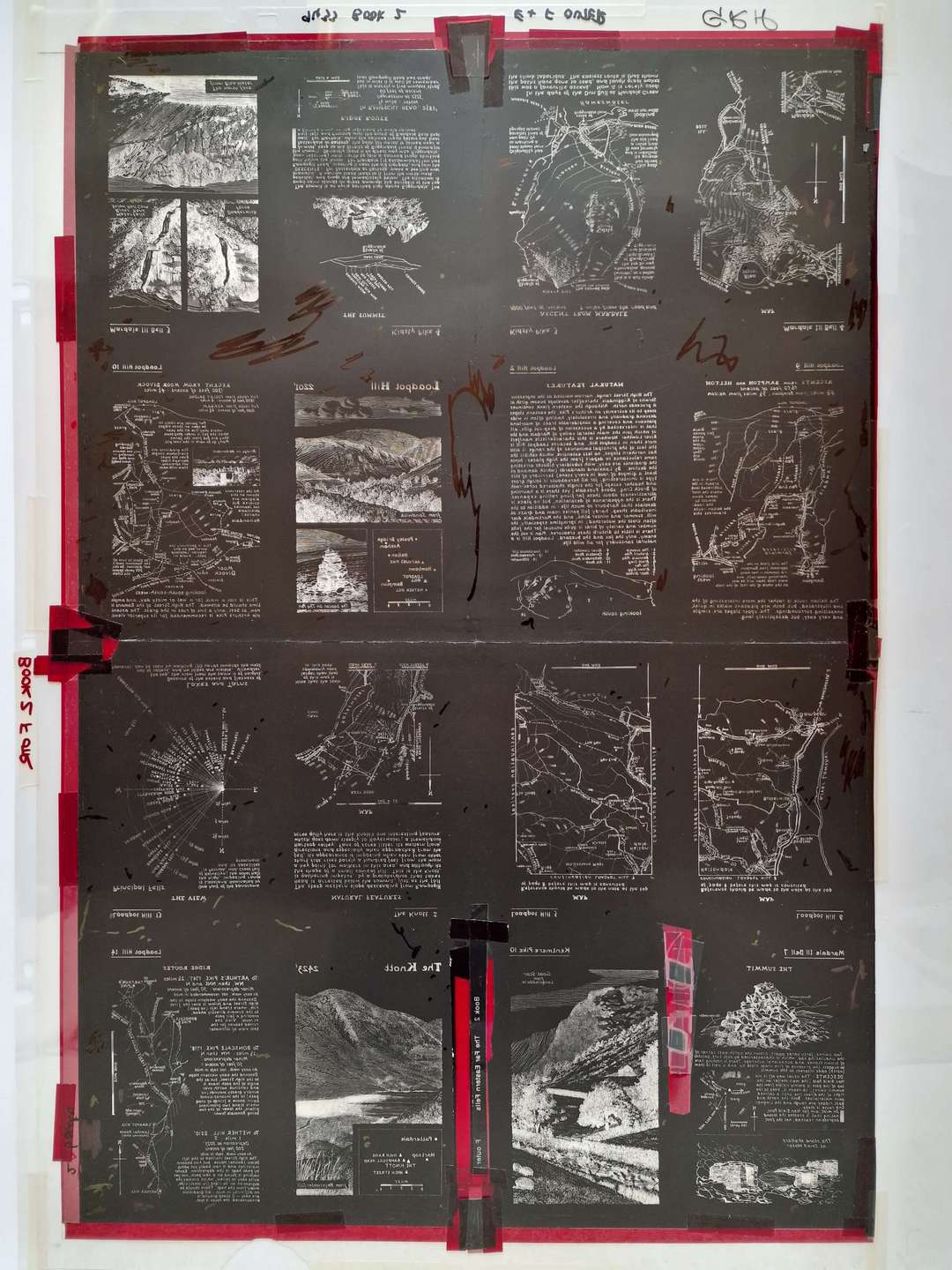The Far Eastern Fells
The Far Eastern Fells was published in May 1957 and was dedicated to:
“The memory of THE MEN WHO BUILT THE STONE WALLS, which have endured the storms of centuries and remain to this day as monuments to enterprise, perseverance and hard work”
<<>>
Before the publication of The Eastern Fells, Wainwright initiated the groundwork for the subsequent book in the series. Although finished by September 1956, the publication occurred in April 1957 with a retail price of 12s 6d. By this time, Wainwright had settled his initial £900 debt with Bateman & Hewitson, enabling him to realise profits from the sales.
The guide incorrectly attributes the engravings to the Westmorland Gazette, as no printing facility in Kendal possessed engraving capabilities. In reality, an engraver based in Manchester was responsible for producing the engravings until the 1970s. Later that decade, the Gazette transitioned to offset litho printing after substantially investing in the new technology.

Regrettably, The Far Eastern Fells didn’t achieve significant sales compared to its counterparts. A case in point is The Western Fells, published almost a decade later, which exhibited a more robust performance. This trend suggests that perhaps walkers lean towards the allure of the more central regions within the Lake District. Often, the peripheral areas of the Lakes are underestimated, but they offer a refuge from the crowds for those seeking solitude.
<<>>
A First Edition is identified by:
- Light grey case with round corners and red blocking
- 12/6 price on the dust jacket
- No impression number
- Book Three listed as – in preparation

Following a few initial impressions, the red lettering on the case was replaced with gold gilt to align with the design consistency of the other guides in the series. The early grey cases are susceptible to staining, making clean and pristine ones relatively hard to come by.










After an extended period, the guides experienced their initial price adjustment. In 1965, the Gazette adopted a price increase strategy by price-clipping the existing stock of dust jackets and subsequently reprinting the new price of 15/- in an altered position on the jacket.

In the early 1970s, cost-saving measures led to the squared corners of the guidebook cases. Like the other guides in the series, the second book departed from its traditional grey case colour, resulting in a varied palette of tones. By 1975, following Wainwright’s approval, the predominant colour for all cases became green. Occasionally, the case material would vary based on availability, and these differences in case type became valuable indicators for identifying the printing date.


In the late 1970s, The Gazette invested significantly in modern offset litho printing technology, enabling the production of negatives for all new titles. By 1980, a cost-cutting measure involved removing gold blocking from the front of the cases, and five years later, impression numbers were discontinued. These strategic changes contributed to reduced production costs, with the last guides featuring impression numbers sold at a retail price of £4.65.




Starting from mid-1986, dating the guides became more complex, with only the price and case types serving as reliable indicators. By 1988, Titus Wilson signed the contract to print the Wainwright books for the Gazette.


Not long after Wainwright passed away in 1991, Michael Joseph took over book publishing and launched new guides in April 1992. Titus Wilson produced the first impressions in Kendal. All consecutive impression numbers were printed at Clays Ltd, Bungay. During the late 1990s, print quality slowly deteriorated—the reason is unknown. Maybe the printing plates weren’t replaced, or the negatives were damaged.




In January 2003, Michael Joseph discontinued guidebook printing, which is suspected to be due to diminishing sales. Following a successful bid to become the new publisher, Cumbrian John Nicoll, the Managing Director of Frances Lincoln Publishers, orchestrated the return of the guides to Kendal.
The announcement sent shockwaves through the walking community. Betty Wainwright expressed her sentiments, stating, “It is wonderful that the printing is returning to Kendal. I am sure it is what AW would have wanted.” Titus Wilson utilised the film of Wainwright’s original distinctive hand-written text and line drawings, which they had retained when they lost the contract in 1991. In April 2003, Frances Lincoln launched the new titles, marking the return of the books to Kendal after a ten-year hiatus.



As the 50th Anniversary of The Eastern Fells publication approached, new guides were released in March 2005, featuring Limited Edition Leather-Bound box sets to commemorate this milestone. These special editions were crafted from fresh scans of Wainwright’s original artwork.

From left to right:
The Far Eastern Fells (50th), F. Lincoln 2005
The Far Eastern Fells (50th) Leather-Bound, F. Lincoln 2005










The 50th Anniversary Editions debuted in paperback format in June 2023 and were presented as a box set. See the Wainwright Box Set Collection for details.

The original guides, esteemed as works of art, had become outdated. Consequently, Second Editions were commissioned to run concurrently with the originals. Chris Jesty undertook the monumental task of revising all twelve guides over several years. The Far Eastern Fells – Second Edition was released in June 2005. Interestingly, the initial printing of this edition featured an absence of red lettering on the front of the case for reasons unknown. Subsequent printings, however, reinstated the red lettering.
The dust jackets, nearly indistinguishable from the originals, were discarded and substituted with photographed jackets. Subsequently, in January 2009, a cloth-bound ten-guide box set modelled after the 50th Anniversary Editions was introduced.


From left to right:
The Far Eastern Fells (SE) original jacket, F. Lincoln 2005
The Far Eastern Fells (SE) photo jacket, F. Lincoln 2005
The Far Eastern Fells (SE) revised, F. Lincoln 2007
The Far Eastern Fells (RE) low gsm paper, F. Lincoln 2009
The Far Eastern Fells (RE) high gsm paper, F. Lincoln 2009
In 2011, Quarto acquired Frances Lincoln for £4.5m. After a few years, the Second Editions became outdated, necessitating new revisions. Clive Hutchby was selected for the task, and the comprehensive process took seven years. The Far Eastern Fells – Walkers Edition was introduced as a flexibound guide in 2015. Eventually, both the Readers and Walkers Editions became printed as paperbacks.

From left to right:
The Far Eastern Fells (RE) hardback, F. Lincoln 2016
The Far Eastern Fells (RE) paperback, F. Lincoln 2020
The Far Eastern Fells (WE) flexibound, F. Lincoln 2015
The Far Eastern Fells (WE) paperback, F. Lincoln 2020


